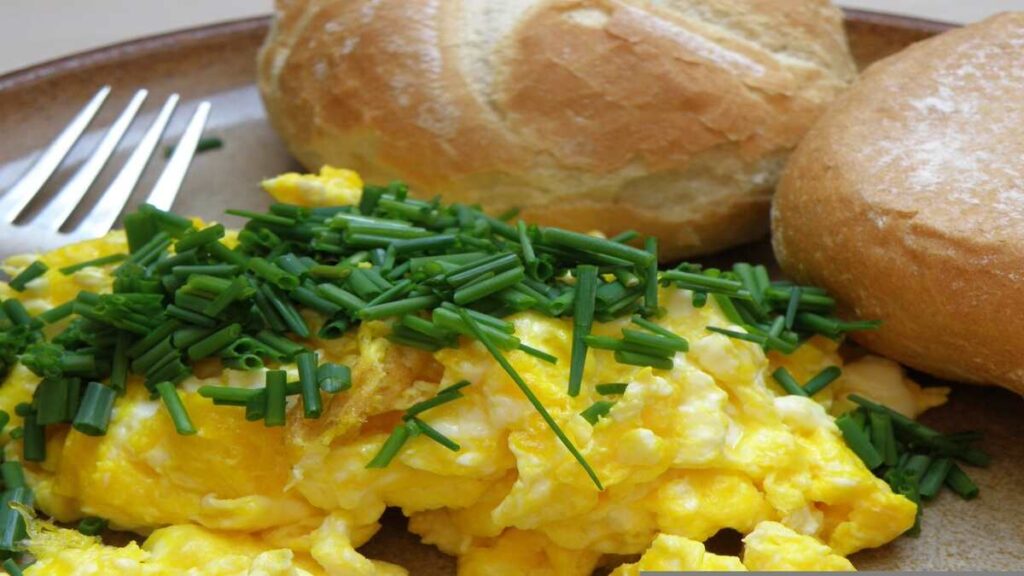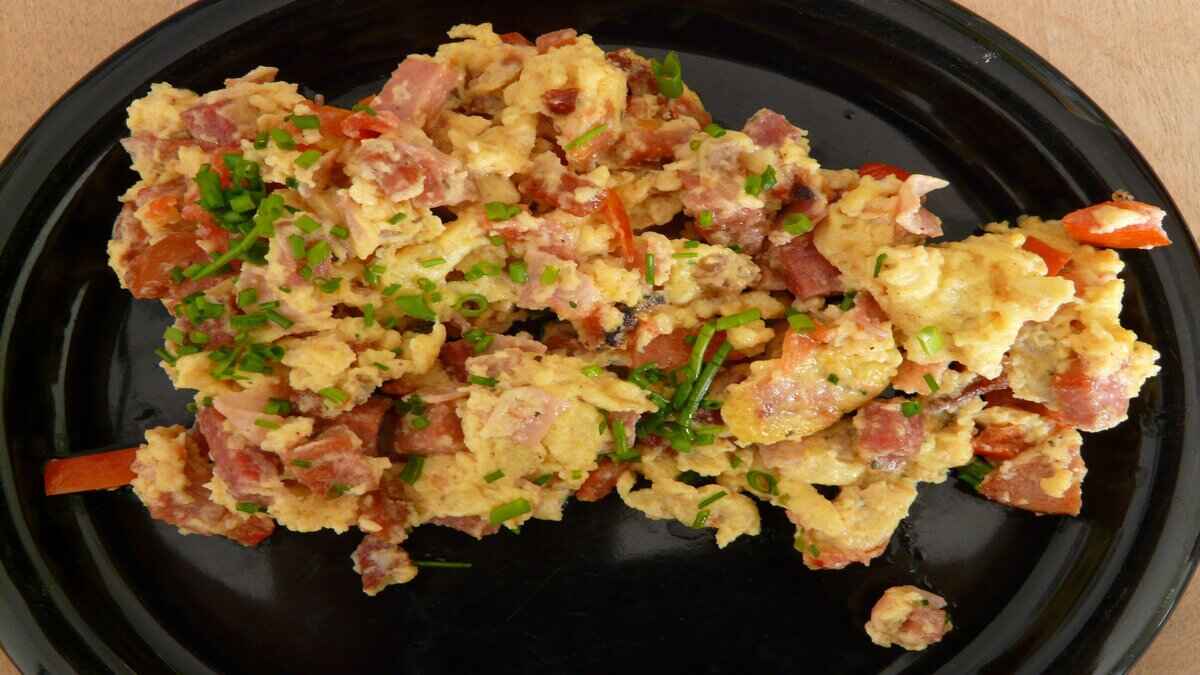Classic Scrambled eggs Recipe are the epitome of breakfast simplicity and comfort. Creamy, fluffy, and endlessly versatile, they have earned their place on breakfast tables worldwide. Whether you’re new to cooking or a seasoned home chef, mastering the art of making classic scrambled eggs Recipe is an essential culinary skill.
In this article, we’ll explore everything about scrambled eggs Recipe—from their origins to step-by-step preparation, health benefits, and tips to elevate your dish. Let’s get cracking!

What Are Classic Scrambled Eggs Recipe?
Scrambled eggs are a simple dish made by whisking eggs Recipe, cooking them gently in a pan, and stirring until set. The result is a creamy, soft, and flavorful egg dish. They are versatile enough to be paired with toast, bacon, vegetables, or enjoyed on their own. Their ease of preparation and adaptability make them a favorite breakfast choice around the globe.
The Origin of Classic Scrambled Eggs Recipe
While the exact origin of Classic scrambled eggs is unclear, historical evidence shows that humans have been enjoying eggs for thousands of years. Ancient Romans were known to whisk eggs with milk and cook them into omelets or custards. Scrambled eggs, as we know them today, likely evolved as a simpler method of cooking eggs in a pan. Over time, they became a breakfast staple in many cultures, celebrated for their versatility and nutritional value.
Ingredients for Classic Scrambled Eggs To make the perfect scrambled eggs, you’ll need just a few basic ingredients:
Main Ingredients:
- Eggs: 3 large eggs (per serving).
- Milk or Cream: 1-2 tablespoons for added creaminess.
- Butter: 1 tablespoon for cooking.
- Salt and Pepper: To taste.
Optional Add-Ins:
- Cheese (shredded cheddar, parmesan, or feta).
- Herbs (chives, parsley, or dill).
- Cooked vegetables (spinach, mushrooms, or tomatoes).
Equipment You’ll Need
- A non-stick skillet or frying pan.
- A whisk or fork.
- A spatula (preferably silicone or rubber for gentle stirring).
- Measuring spoons for accuracy.
Step-by-Step Preparation
1. Gather and Prepare Ingredients
Start by Classic cracking the eggs into a bowl. Add a splash of milk or cream and season with a pinch of salt and pepper. Whisk the mixture vigorously until well combined. The more air you incorporate, the fluffier the eggs will be.
2. Heat the Pan
Place a non-stick skillet over low to medium heat. Add a tablespoon of butter and let it melt, coating the pan evenly. The butter should foam slightly but not brown, as this can affect the flavor.
3. Cook the Egg
Pour the egg mixture into the pan. Let it sit undisturbed for 10-15 seconds to allow the bottom to set slightly. Using a spatula, gently stir the eggs, pushing from the edges toward the center. This creates soft, curd-like folds.
4. Stir Continuously
Continue to stir gently, scraping the bottom of the pan to ensure even cooking. If the pan becomes too hot, remove it from the heat momentarily to avoid overcooking.
5. Remove from Heat
When the eggs are nearly set but still slightly runny, remove the pan from the heat. Residual heat will finish cooking them, ensuring they stay creamy and tender.
6. Serve Immediately
Transfer the scrambled eggs to a plate and garnish with your favorite toppings, such as herbs, cheese, or a sprinkle of black pepper.
Health Benefits of Classic Scrambled Eggs Recipe

Scrambled eggs are not just delicious—they’re also highly nutritious. Here are some key health benefits:
- Rich in Protein: Eggs are an excellent source of high-quality protein, essential for muscle repair and overall body function.
- Packed with Vitamins and Minerals: Eggs contain vitamins A, D, B12, and minerals like iron and selenium.
- Supports Brain Health: The choline in eggs plays a crucial role in maintaining brain health and function.
- Low-Carb and Keto-Friendly: Scrambled eggs are naturally low in carbs, making them suitable for low-carb diets.
- Customizable Nutrition: Adding veggies or lean meats can enhance the nutritional profile of your scrambled eggs.
Additional Tips for Perfect Classic Scrambled Eggs Recipe
- Low and Slow: Cooking Classic scrambled eggs over low heat ensures they stay creamy and tender.
- Whisk Well: The more you whisk the eggs, the fluffier they’ll be.
- Don’t Overcook: Remove the eggs from heat while they’re still slightly runny to avoid a rubbery texture.
- Experiment with Add-Ins: Cheese, herbs, or even smoked salmon can elevate your scrambled eggs to gourmet status.
Best Way to Serve Classic Scrambled Eggs Recipe
Scrambled eggs are versatile and can be served in countless ways. Here are some popular serving suggestions:
- With Toast: Pair with whole-grain toast or a buttery croissant.
- As a Filling: Use scrambled eggs in breakfast burritos, tacos, or sandwiches.
- With Sides: Serve alongside crispy bacon, sausage, or sautéed vegetables.
- On Avocado Toast: Top mashed avocado with scrambled eggs for a trendy, nutrient-packed breakfast.
- With Hot Sauce: A dash of your favorite hot sauce adds a spicy kick.
Calories and Nutritional Information
For a basic serving of Classic scrambled eggs (3 eggs with 1 tablespoon of butter and 1 tablespoon of milk):
- Calories: ~250-300
- Protein: 18g
- Fat: 20g
- Carbohydrates: 1-2g
(Note: Nutritional values will vary based on add-ins and portion sizes.)
Preparation Time and Cooking Time
- Preparation Time: 5 minutes
- Cooking Time: 5-7 minutes
- Total Time: ~10-12 minutes
Conclusion
Classic scrambled eggs are a timeless dish that brings comfort and nourishment to any table. Whether you prefer them plain or jazzed up with your favorite ingredients, scrambled eggs are easy to make and hard to resist. With the tips and techniques shared here, you’re now ready to master the art of perfect scrambled eggs. So, grab your whisk and skillet, and treat yourself to a delicious plate of this breakfast classic.
FAQs
1. Can I make Classic scrambled eggs without milk?
Yes, you can omit milk or cream. The eggs will still turn out delicious, though slightly less creamy.
2. How do I prevent my Classic scrambled eggs from sticking to the pan?
Using a non-stick skillet and enough butter or oil ensures your eggs won’t stick.
3. Can I make Classic scrambled eggs in advance?
Scrambled eggs are best enjoyed fresh. However, if needed, you can reheat them gently on low heat.
4. What’s the Classic secret to fluffy scrambled eggs Recipe?
Whisking the eggs thoroughly and cooking them slowly over low heat creates fluffy results.
5. Can I freeze Classic scrambled eggs Recipe?
Yes, cooked scrambled eggs can be frozen. Allow them to cool completely, store in an airtight container, and reheat as needed.
